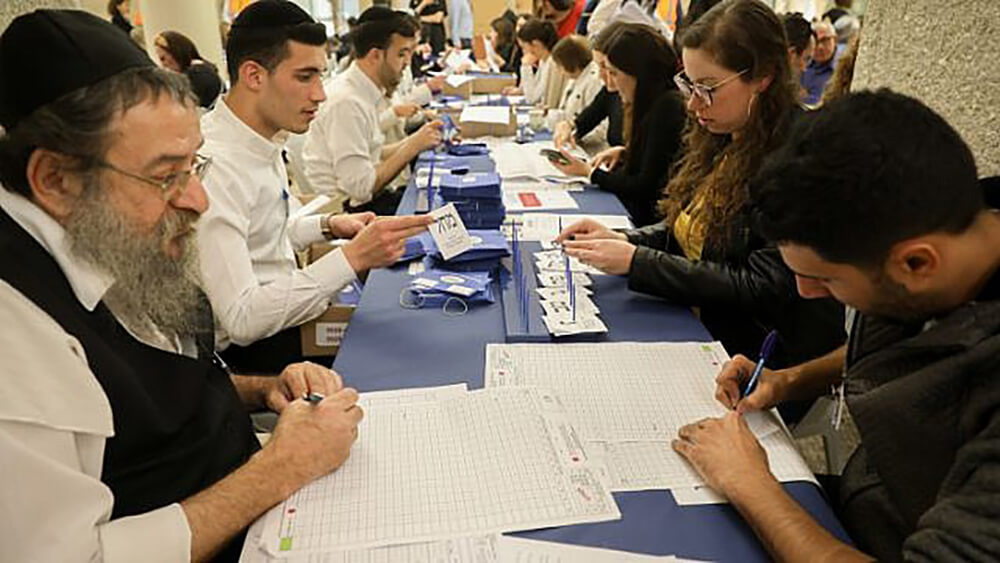Quite remarkably, Israel has been through 20 smooth transitions of power. And despite the dispersal of the Knesset following Benjamin Netanyahu’s inability to form a majority coalition in April, the mandate to govern has been returned to where it belongs in a democracy: the voters
By: Dov Lipman
In less than three weeks, Israelis will head to the polls for their second national election in just six months. Israeli Prime Minister Benjamin Netanyahu’s inability to form a majority coalition following the April elections, and the subsequent dispersal of the Knesset, raise significant questions about the viability and stability of Israel’s imperfect parliamentary system.
Israel’s system of governance differs sharply from that of the United States, and even differs from that of the very nation whose system it attempted to emulate. Former deputy foreign minister and Israeli ambassador to the United States Danny Ayalon explained to JNS that upon founding the Jewish state, “Israeli leaders simply took the electoral system of the United Kingdom, since the British had control over the region leading up to Israeli independence.”
Ayalon noted that the British system was vastly simplified by removing regional representation—a move that can only make sense in a small state such as Israel. Ayalon said this was done “because after the [1948] War of Independence it was simply easier to declare national elections without having to deal with dividing the country into regions and making the elections more complicated.”
Party primaries—or not
In Israel’s parliamentary system, citizens do not vote for a specific candidate but rather for their preferred political party. Prior to elections, each party submits a list of candidates to the Central Elections Committee, which is headed by a Supreme Court Justice.
Each party determines for itself how it selects and orders its Knesset candidates. While some parties, including Likud and Labor, hold primaries, other parties, including Blue and White, manufacture candidate lists via a special internal committee or permit the party chairman to hand-pick the list.
Paper ballots
On election day, all citizens at least 18 years old currently residing in the country are assigned a polling location close to their registered address. Israelis living abroad are not permitted to vote. Active-duty soldiers, prisoners, the disabled and others who cannot reach their designated polling stations vote via a system called “double envelopes.”
In “double envelope” votes, the envelope containing the ballot is placed inside a second envelope signed by and bearing the details of the voter. The “double envelopes” are then brought to the Central Elections Committee, which begins to count them on the day after the election.
Unlike in the United States where electronic voting kiosks are standard, Israelis vote by placing paper ballots in boxes.
Jonny Kirsch, an attorney for the government who has been responsible for overseeing a polling station for the past five elections, told JNS, “When voters arrive, my polling station committee, made of representatives from different parties, check their identification to make sure they are at the correct location, check their name off the list of voters for that station and hand the voter an envelope.”
In the voting booth, voters see slips of paper representing each party. The slips bear large “ballot letters” (between one and three Hebrew or Arabic letters) and the full official name of the party underneath. In the privacy of the voting booth, voters choose the slip representing their desired party and put the slip inside their envelope. Then, after sealing it, the voter leaves the voting booth and places the envelope into the ballot box in front of the polling station committee.
Counting votes
Polls close at 10 p.m., at which time a complicated vote-counting operation begins and the media’s (historically inaccurate) exit polls are released to the public.
Kirsch explained to JNS that once polls close “we begin counting the votes by hand, again with representatives of the party involved. We document the results, and then bring the results along with the actual ballot box to one of 25 vote counting centers throughout the country. Our documentation is checked there for any irregularities and then the results are entered into the Central Election Committee’s closed software system, where they are rechecked. If the software detects irregularities, this is brought to the attention of a district judge who is present for this centralized vote counting process and makes decisions regarding validating and invalidating votes.”
Double envelope votes are counted later to ensure each eligible voter voted only a single time.
Dividing Knesset mandates
Following the vote counting, the Knesset’s 120 seats are divided up proportionally to the number of votes each party received. Thus, for example, if a party wins 25% of the total votes, that party receives 30 of the 120 Knesset seats and the top 30 candidates on that party’s list become Knesset members.
If a party receives less than 3.25 percent of the overall vote, then all the votes that party received are disqualified and do not factor into the equation determining the division of the 120 Knesset seats. For this reason, smaller parties often choose to run together on joint lists to improve their chances of crossing the threshold.
After the vote tally for each party that passed the threshold is tabulated, the total number of valid votes is divided by 120. This number is called the “index.”
The number of valid votes each party has received is then divided by the index to calculate the number of seats each party has won. However, the total number of seats resulting from this calculation usually comes out to a number under 120.
The “excess” seats are distributed first among pairs of lists that signed “surplus vote agreements” prior to the election. After determining which list-pairs receive additional seats, which lists within the pair receives each additional seat is then calculated.
Once the final results are tallied and calculated, the 120 MKs are announced. The new Knesset is inaugurated two weeks after the election.
(JNS.org)





